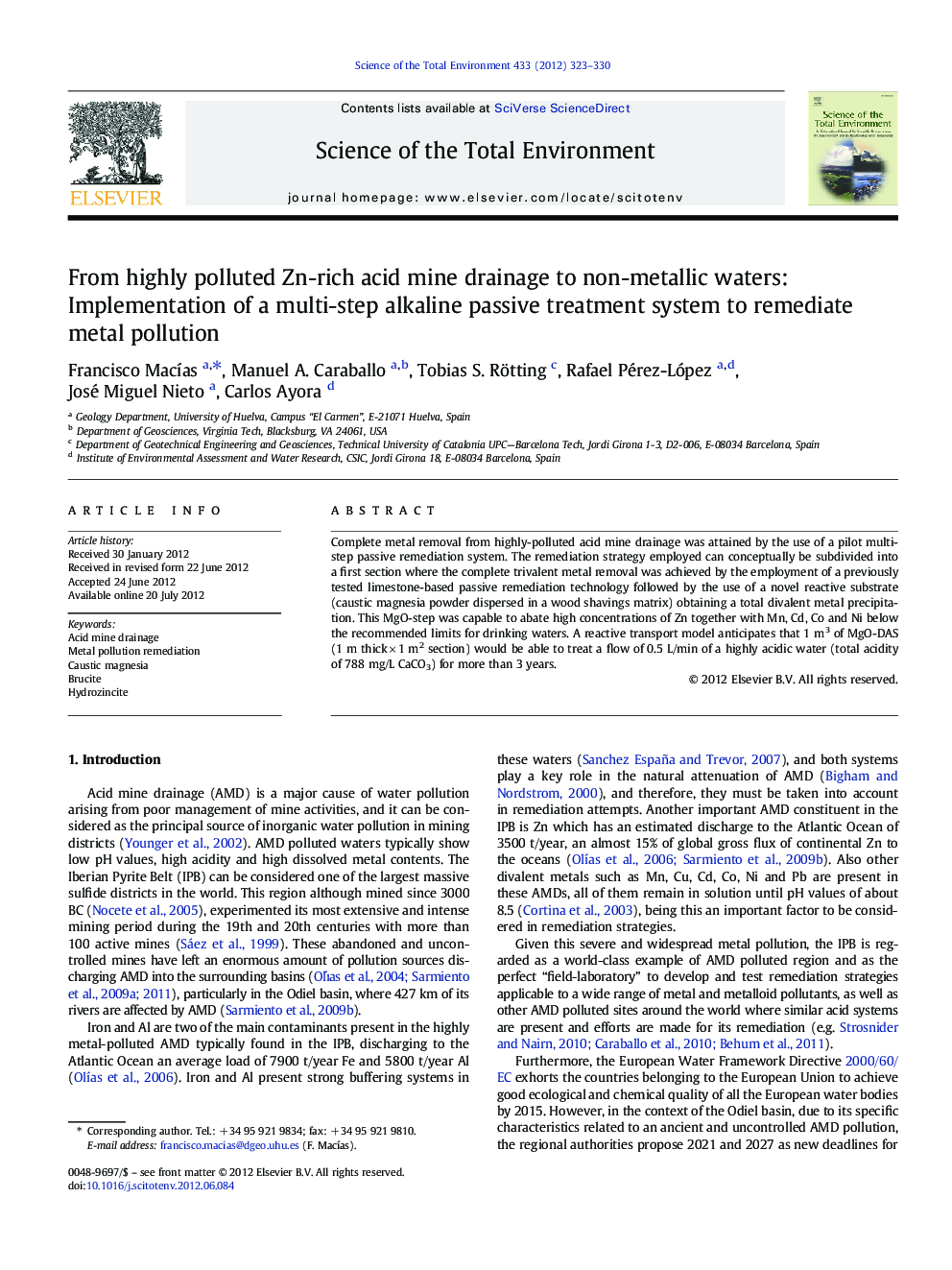| کد مقاله | کد نشریه | سال انتشار | مقاله انگلیسی | نسخه تمام متن |
|---|---|---|---|---|
| 6334105 | 1619819 | 2012 | 8 صفحه PDF | دانلود رایگان |

Complete metal removal from highly-polluted acid mine drainage was attained by the use of a pilot multi-step passive remediation system. The remediation strategy employed can conceptually be subdivided into a first section where the complete trivalent metal removal was achieved by the employment of a previously tested limestone-based passive remediation technology followed by the use of a novel reactive substrate (caustic magnesia powder dispersed in a wood shavings matrix) obtaining a total divalent metal precipitation. This MgO-step was capable to abate high concentrations of Zn together with Mn, Cd, Co and Ni below the recommended limits for drinking waters. A reactive transport model anticipates that 1 m3 of MgO-DAS (1 m thick Ã 1 m2 section) would be able to treat a flow of 0.5 L/min of a highly acidic water (total acidity of 788 mg/L CaCO3) for more than 3 years.
⺠Complete metal removal was attained by a pilot multi-step passive remediation system. ⺠Outflowing metal concentration is decreased below the limits for drinking waters. ⺠A reactive transport model successfully matched the experimental breakthrough data. ⺠The reactive transport model points out the long-term performance of the system. ⺠The treatment pilot plant should be considered by the authorities for full scale use.
Journal: Science of The Total Environment - Volume 433, 1 September 2012, Pages 323-330